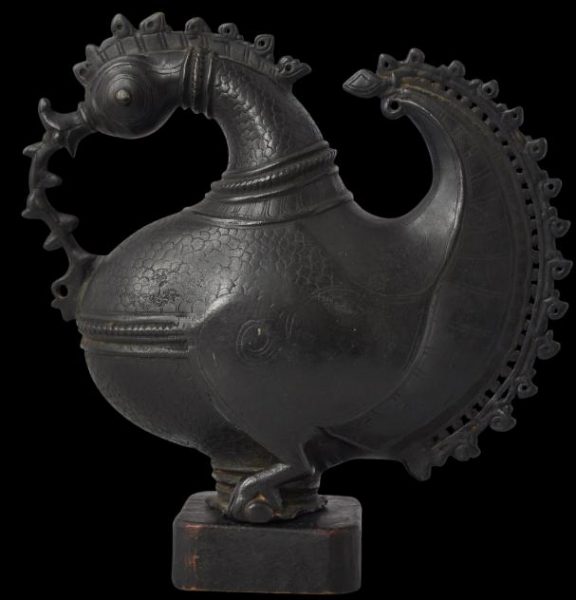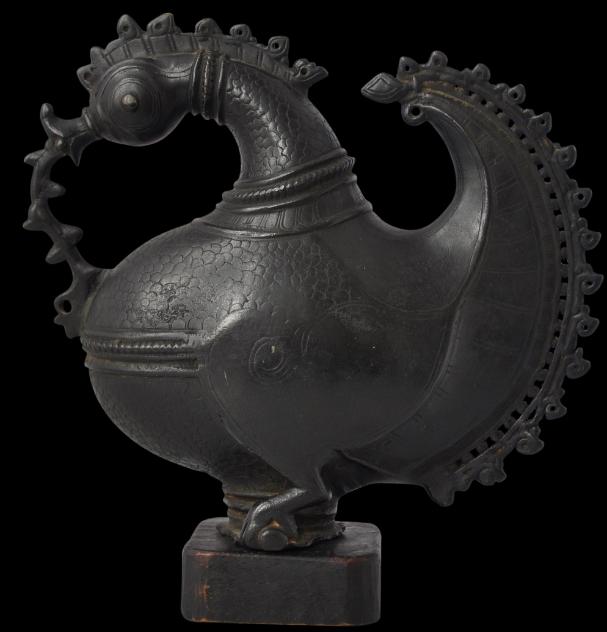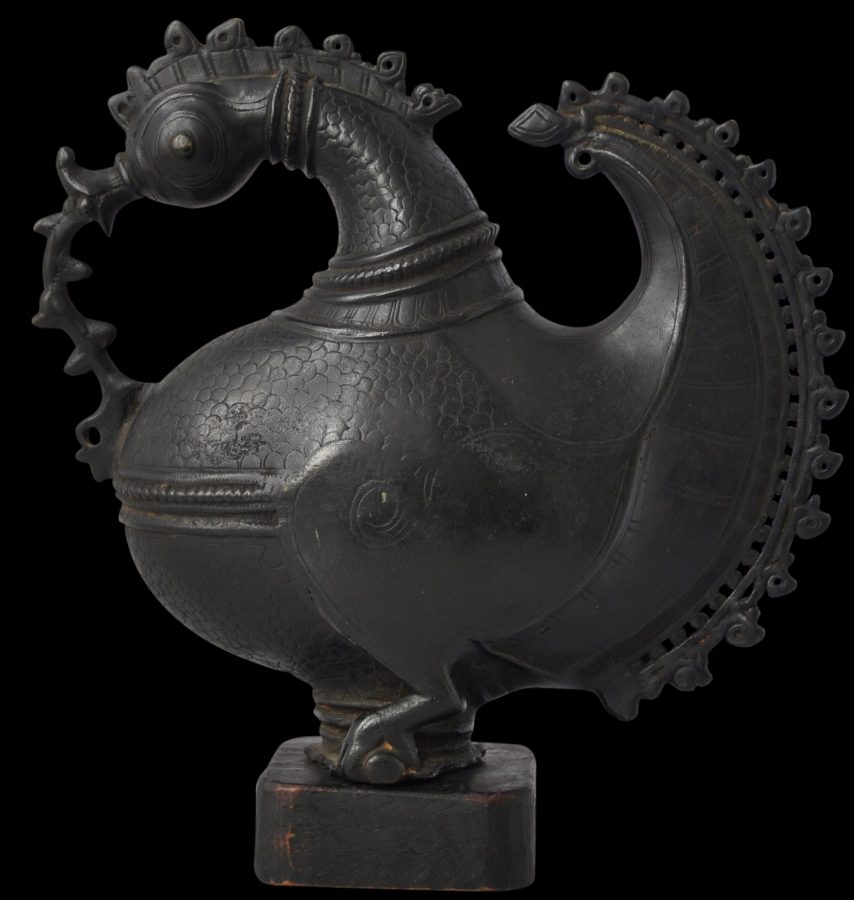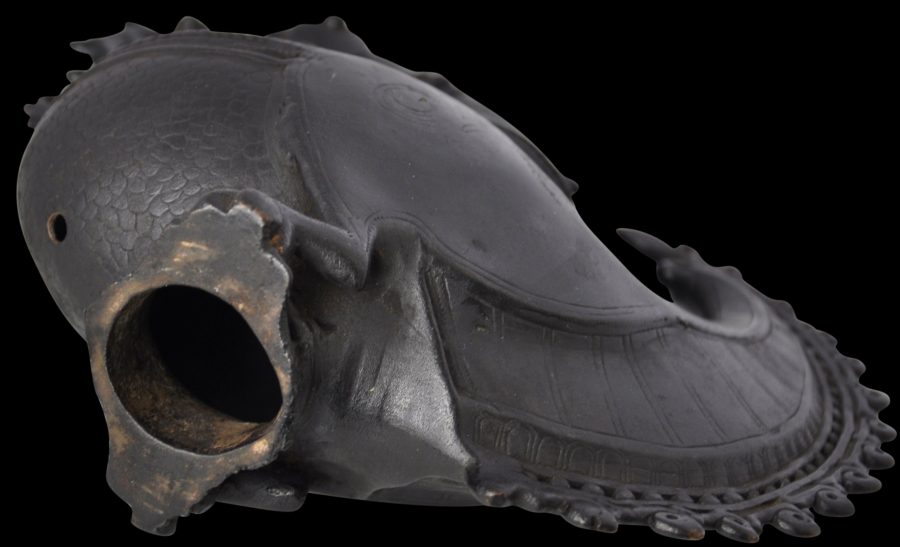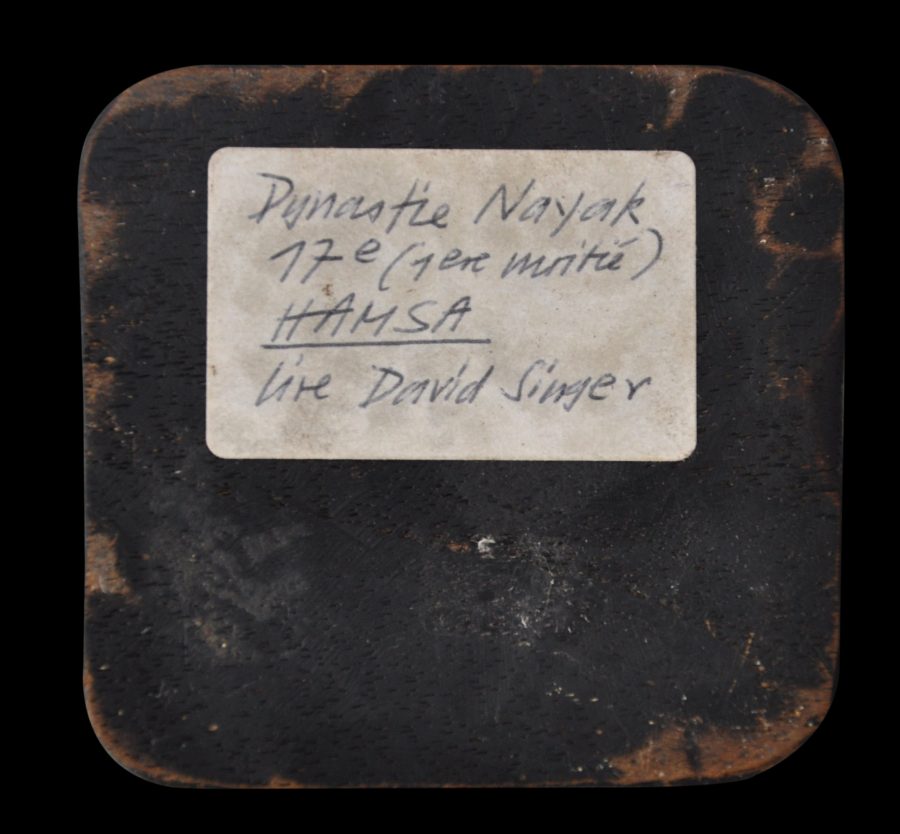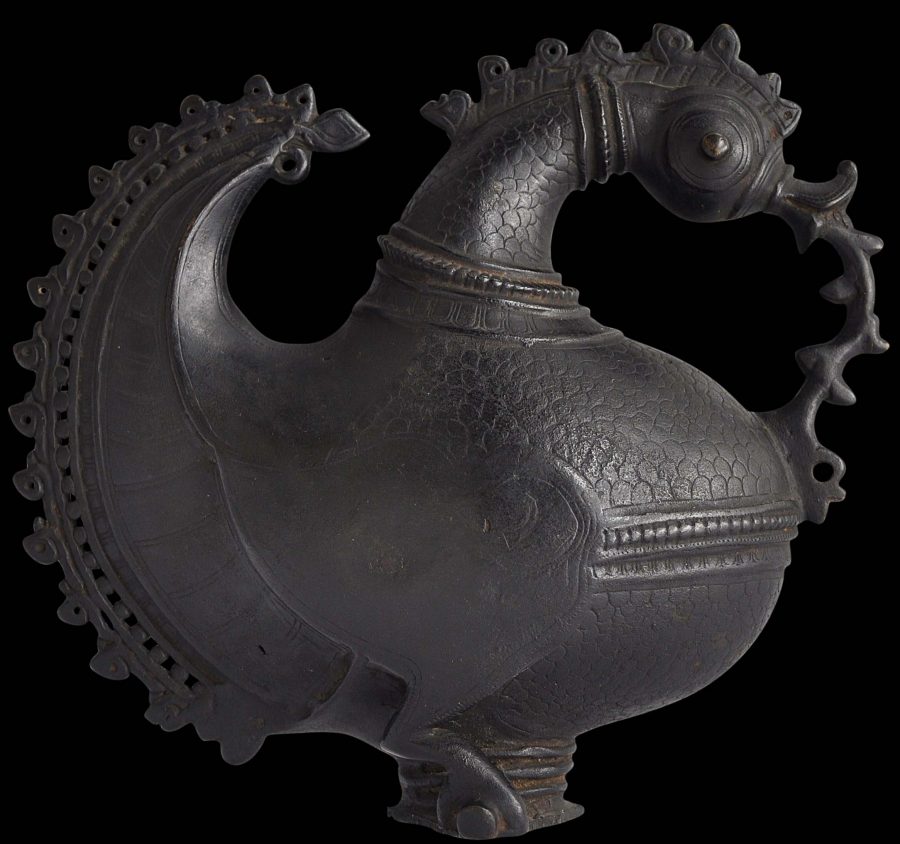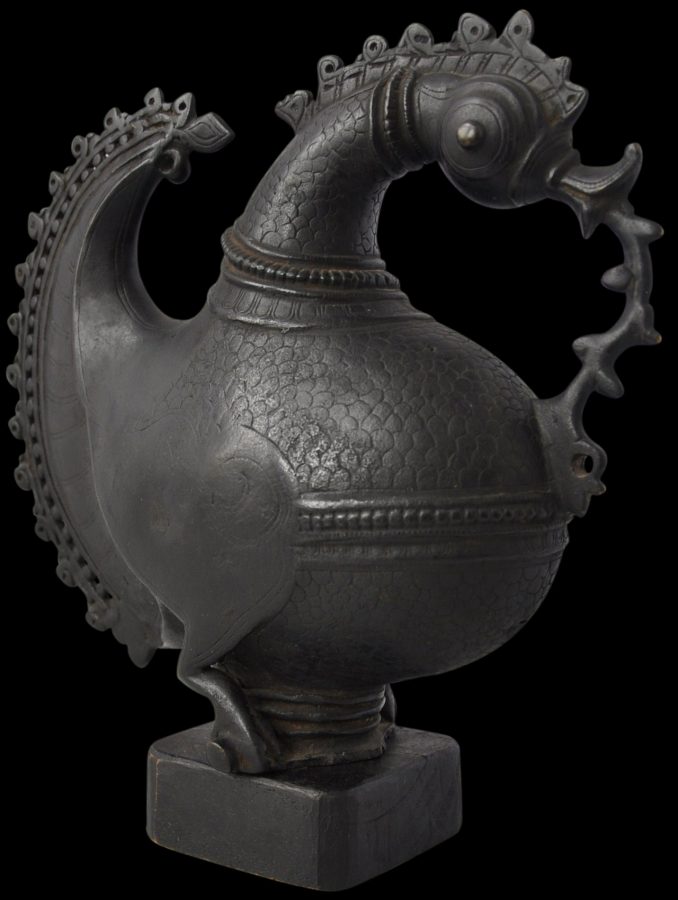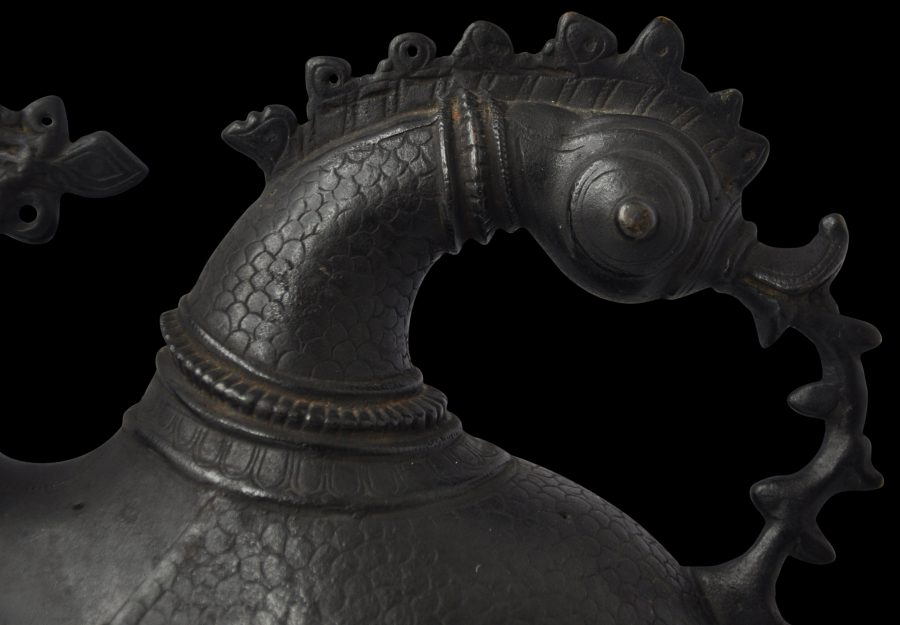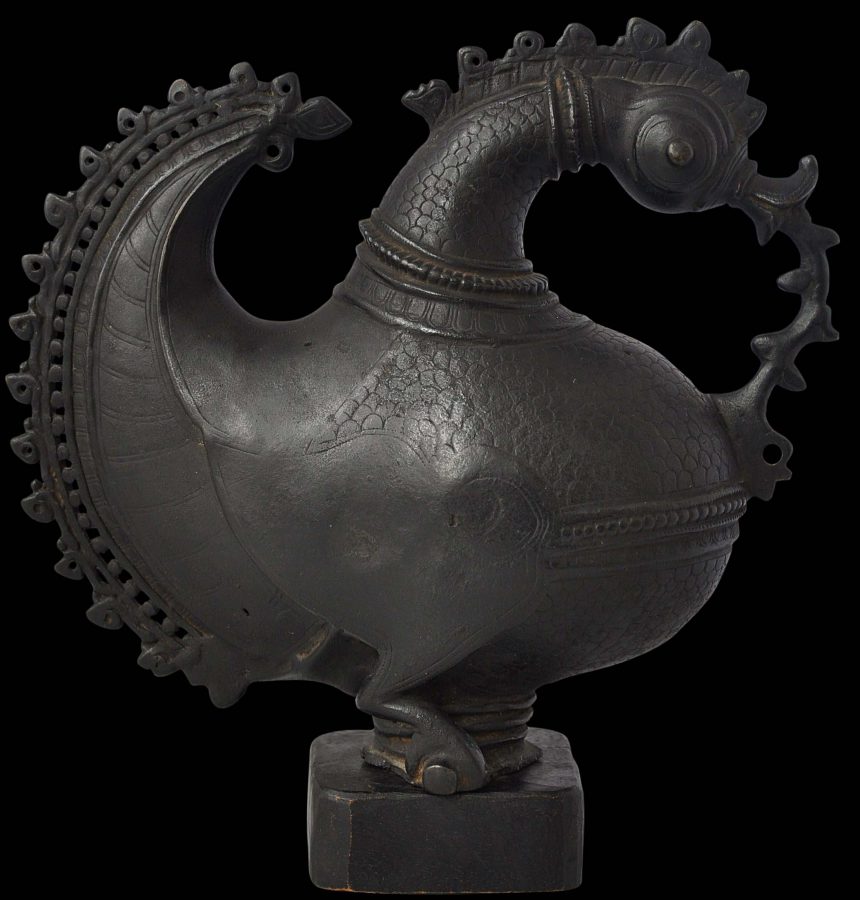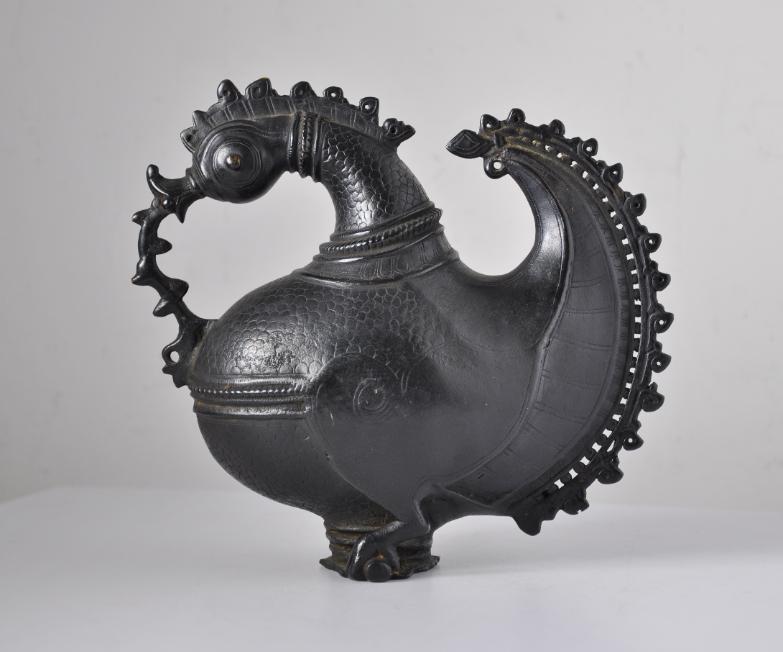This beautifully cast hamsa or sacred swan is from early seventeenth century South India at a time when the various Nayak dynasties emerged to rule South India after the downfall of Vijayanagara Empire. The image would have served as an oil reservoir for a lamp. It has a deep, near black patina.
It has been cast with a splendid sweep of open-work tail feathers which arc around almost to the feathers that adorn the top of the head. The image’s neck and plump breast have been cast with bands of fine serrations and lotus petals. The body and neck are further decorated with feather markings.
The hamsa’s head is symmetrical on both sides – each with ridged bands above prominent, protruding eyes. The beak is well defined and holds a flowing strand of water weed which cascades down to the bird’s breast.
The extremely high quality of the casting is testified by the fluidity of the flow of tail and head feathers and then the foliage emitted from the bird’s beak which, together, act to frame the hamsa within an oval contour. The superior casting also is suggested by the incredibly light weight of the image: it is surprisingly light in the hand.
Zebrowski (1997, p. 99-101) illustrates two South Indian cast hamsas. Perhaps the closest in terms of fluidity of form is a hamsa-form betel box illustrated as an engraving only that was first published in 1938. The whereabouts of this example today is unknown, nor are photographs of this piece known.
The other is a bronze hamsa aquamanile or ewer attributed to seventeenth century South India, now in the Hermitage Museum in St Petersburg and formerly in the collection of Count Bobrinsky, a descendant of Russia’s Catherine the Great. The Hermitage example is more chunky and perhaps lacks the finesse of the example here, although has a similar patina.
The hamsa here sits on a small, wooden custom-made stand. An old collection label (in French) is affixed to the underside of the stand.
Vessels in the form of birds and animals from India can best be understood in the context of comparable objects made centuries earlier in the Middle East (Zebrowski, 1997, p. 95). Generally, zoomorphic figures made in India and the Middle East served as ewers, incense burners, decorative finials and oil lamp reservoirs. In India, such vessels represent a rare tradition of non-religious figurative art from a period when realistically rendered animal forms generally were avoided on account of Islamic prohibitions on idolatrous imagery, certainly in north India at least. Cast brass and bronze zoomorphic ewers and lamp finials from South India can be seen to share the Middle Eastern Islamic antecedents of similar pieces from Mughal and Sultanate India.
This important hamsa is one of the best cast examples of an early zoomorphic vessel from India that we have seen. It is at least as comparable to related examples now in the Hermitage Museum, the Fogg Art Museum and the British Museum and would make a fine addition to any important collection of Indian or Islamic art. See also lot 17, Sotheby’s London ‘Islamic Works of Art’, April 30, 1998 for an example of similar size that is attributed to the seventeenth century but perhaps lacking the fineness and flow of the example here.
References
Zebrowski, M., Gold, Silver & Bronze from Mughal India, Alexandria Press, 1997.


